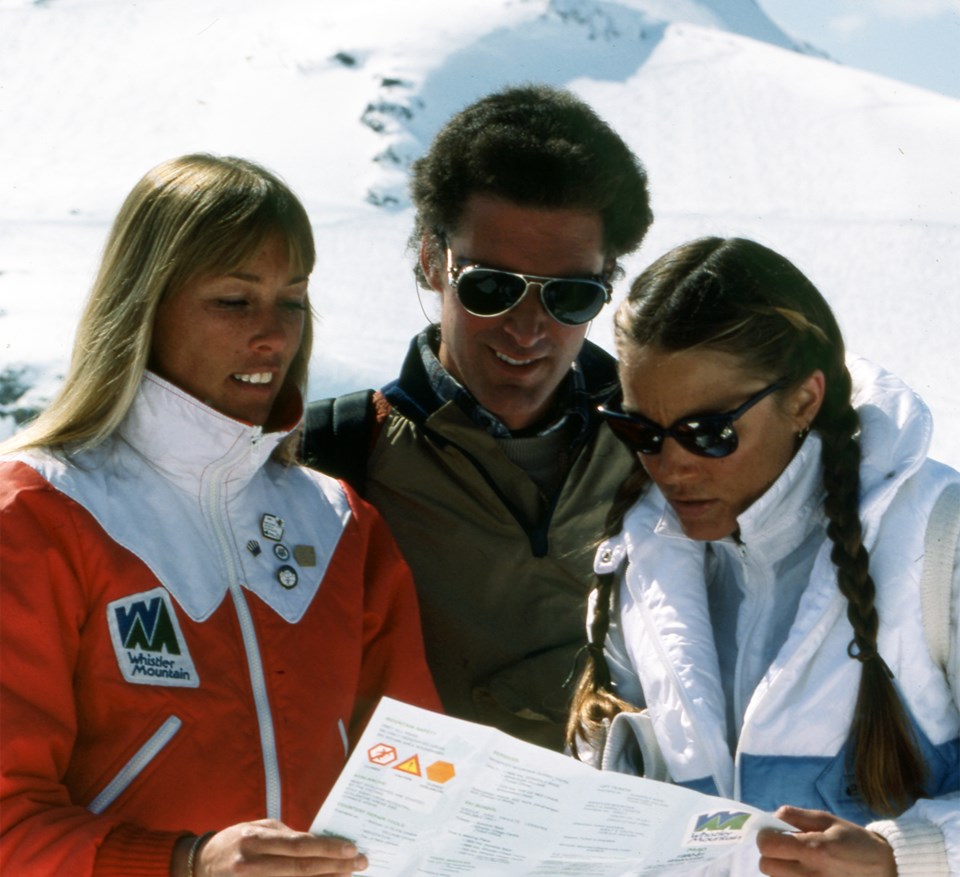In the winter of 1987-88, a new group of uniformed skiers could be found on Whistler Mountain helping to create positive experiences for skiers on the hill. Known as Ski Friends, the program was modelled largely on the volunteer Ski Friends program at Lake Louise, even borrowing the name.
In February 1987, Mary Read, who with her husband Preston was an original investor in Whistler Mountain, asked her sister-in-law in Calgary for information about the Ski Friends program as Whistler was looking to form something similar. A Ski Friend herself, Dorothy “Dee” Read (member of the Canadian Ski Hall of Fame and mother of Crazy Canuck Ken Read) obliged by sending Mary a copy of the 1985-86 Ski Friends reference manual, a daily roster sheet, a Skiing Louise trail map, and a copy of “Amongst Friends,” the Ski Friends newsletter. These documents, along with Whistler Mountain Ski Friends manuals that belonged to Mary, were donated to the Whistler Museum and Archives in the 1990s and together clearly show the similarities of the two programs.
The Skiing Louise Ski Friends was founded in 1977-78 by the wives of ski patrol members who wanted to contribute to the resort. By 1985, Lake Louise had up to 90 members “of both genders, all ages and from numerous walks of life.” The stated aim of the Ski Friends was “to enhance the enjoyment of the skiing public at Lake Louise,” and they did this by conducting free guided tours of the ski area, providing skiers with information such as directions and trail maps, and generally being a positive presence and friendly faces on the ski hill.
While Ski Friends had various responsibilities around the ski area, it appears the guided tours were one of the most important parts of being a Ski Friend. Tours met at the Ski Friends sign multiple times each day and Ski Friends would take groups of eight to 10 skiers, most of whom were new to the area. According to the manual, “A new area is overwhelming to first-timers, so the tour should be designed to show participants where to ski when they’re eventually on their own.” Ski Friends also pointed out facilities and provided additional information on the area and its history, much of which was outlined in the manual.
The Ski Friends program at Whistler Mountain, as outlined in its 1987-88 manual, included many of the same responsibilities and expectations as the Lake Louise program, though it also involved being a bit of a salesperson. According to the official job summary, “The Whistler Ski Friend is expected to sell to the public the services, programs, benefits and qualities of Whistler Mountain; and to ensure, by dispensing accurate information and generous assistance, that the guest has the best ski experience possible.”
Looking through the 1987-88 manual, some familiar names show up as Ski Friends, including Mary Read, Isobel MacLaurin (who acted as a “float”), and BJ Godson, who led the program before leaving Whistler in the late 1980s.
Like in Lake Louise, Whistler Ski Friends led tours of the ski area. They also helped with crowd control in lift lines, handed out maps and brochures, assisted with on-hill races and picnics, and generally worked to make guests’ ski days more pleasant by assisting in any way they could (the manual pointed out the map at the Alpine Lightboard was “a good place to find confused and lost skiers”). Ski Friends were provided with up-to-date information on grooming, events, and weather conditions, as well as historical and general information about the resort and the mountain.
Today, there are still friendly uniformed faces on Whistler and Blackcomb Mountains who lead tours and offer information, though the program is now known as the Mountain Hosts. The Ski Friends program at Lake Louise is still going strong, offering tours and information to visiting skiers and snowboarders.




